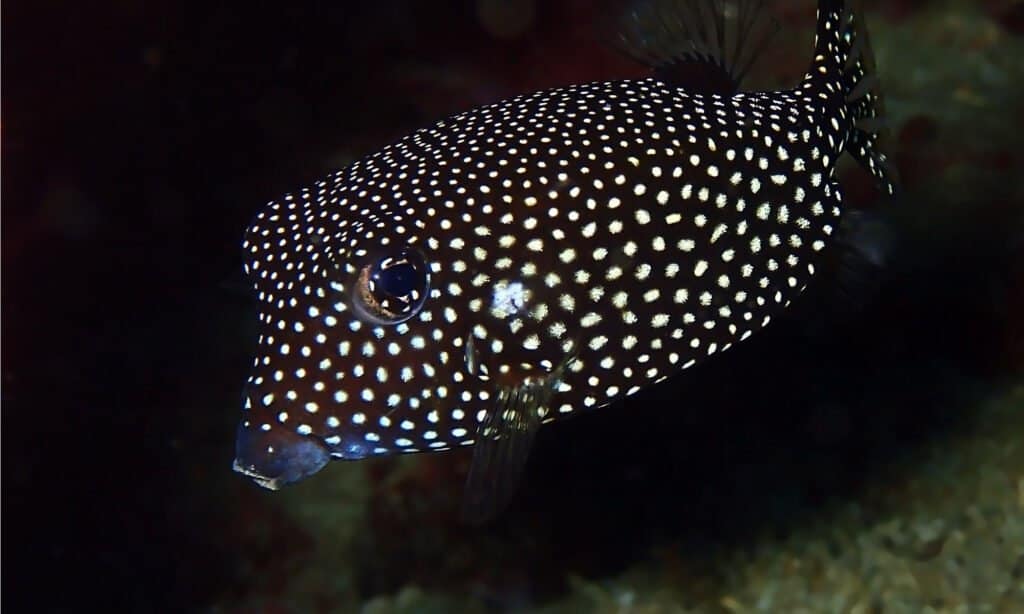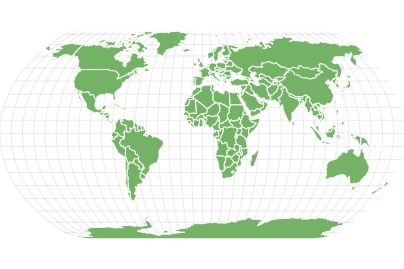Boxfish
Ostracion cubicus
Can release a toxin from its skin
Advertisement
Boxfish Scientific Classification
- Kingdom
- Animalia
- Phylum
- Chordata
- Class
- Actinopterygii
- Order
- Tetraodontiformes
- Family
- Ostraciidae
- Genus
- Ostracion
- Scientific Name
- Ostracion cubicus
Read our Complete Guide to Classification of Animals.
Boxfish Conservation Status
Boxfish Facts
- Prey
- Algae, worms, small fish
- Group Behavior
- Solitary
- Fun Fact
- Can release a toxin from its skin
- Estimated Population Size
- unknown
- Biggest Threat
- Being captured as exotic pets
- Most Distinctive Feature
- Box-like body shape
- Other Name(s)
- Cowfish, trunkfish
- Optimum pH Level
- 8.1-8.4
- Habitat
- Ocean
- Predators
- Large size fish, sharks, humans
- Diet
- Omnivore
- Type
- Tetraodontiformes
- Common Name
- Box fish
- Number Of Species
- 24
View all of the Boxfish images!
It’s easy to see how a boxfish got its name. Its body is the shape of a small box! These are saltwater fish living on coral reefs in the Pacific and Indian Oceans as well as the southeastern Atlantic Ocean. They’re sometimes sold as colorful additions to an aquarium.
3 Boxfish Facts
- Poison protection: Boxfish have a deadly neurotoxin in their skin they can release when threatened by a predator.
- Lots of eggs: Though not much is known about the breeding habits of the boxfish, biologists have found that a female boxfish can lay eggs every day for one month.
- Sand blower: A boxfish sometimes blows water into the sand in search of the vegetation and prey in its diet.
Classification and Scientific Name
Ostracion cubicus is the scientific name of a boxfish. The Latin word Ostracion means shell which refers to the carapace or shell structure of this fish. Cubicus means cube-like.
Trunkfish and cowfish are some of its alternate names. It’s in the Ostraciidae family and the class Actinopterygii.
There are 23 species of fish in the Ostraciidae family. Some examples:
- Ostracion meleagris
- Lactoria diaphana
- Lactophrys triqueter
- Lactophrys trigonus
Types of Boxfish: The Different Species
The Ostraciidae family of boxfish contains 23 species. Some of these family members live in the Atlantic Ocean while others live in the Pacific or Indian Oceans.
- Spotted boxfish: These fish live in the Pacific off the coast of Mexico. They are sometimes called the white spotted boxfish. This is due to their ornate, bright blue lower body spotted with yellow.
- Roundbelly cowfish: It’s called a cowfish because of the two small horned structures sticking out of its head. They are found in the southeastern Atlantic Ocean on coral reefs as well as in the Pacific Ocean off the coast of California.
- Smooth trunkfish: This fish is named for the shape and texture of its body. It’s dark brown and spotted with white. They live in the Atlantic Ocean off the coast of Mexico, Florida, and the eastern coast of South America.
Boxfish Appearance
The appearance of a boxfish changes as it grows older. If you see a brilliant yellow boxfish spotted with black, you know it’s a juvenile. But, if you see one with a blue/gray, dull yellow or even brownish body with faded spots, you know it’s an adult boxfish.
Their boxy shape is due to the shell structure beneath its scales. This odd shape makes them very slow swimmers. In fact, some describe their movement as hovering, instead of swimming.
Generally, these fish grow to a size ranging from three to 16 inches. The longest is 18 inches long.
Large fish and sharks are predators of the boxfish. Considering its small size, it would seem like easy prey. But one of the most interesting facts about the boxfish is it has a few effective ways to defend itself.
For one, this fish has a bright yellow body spotted with black. The brilliant, ornate color of its scales is a warning to predators that it contains poison. Indeed, if this fish becomes stressed, it releases poison into the water around it. This poison can make a predator sick or even kill it.
Some species of boxfish have horned structures that can deter predators.
The sturdy shell beneath the scales of a boxfish also makes this fish unappetizing to many types of predators!

Boxfish can be found in a variety of colors and patterns.
©KT photo/Shutterstock.com
Distribution, Population and Habitat
These saltwater fish live in the Pacific, Indian and southeastern Atlantic Oceans. They are found off the western and eastern coasts of Australia. Boxfish also live off the southeastern coast of the United States.
They have a coral reef habitat and occupy lagoons. These fish live at a range of depth from three to 920 feet.
Their population has not been evaluated.
Boxfish Predators and Prey
Boxfish have an omnivorous diet. They hover over the rocky slopes and near the sandy bottom of a lagoon looking for small prey.
What eats a boxfish?
Large size fish, sharks, and humans are all predators. Some humans eat them while others keep these ornate blue, yellow and spotted fish in aquariums.
These fish don’t have an official conservation status because they haven’t been evaluated by the IUCN Red List.
What do boxfish eat?
The diet of a boxfish includes marine algae and small fish including krill as well as crustaceans.
Reproduction and Lifespan
These fish reproduce in the late spring in warm water. They form groups including one male and two to four females. The females lay eggs that float near the surface. The male boxfish releases sperm to fertilize the eggs. A female boxfish can lay eggs every day for a month. The gestation period is unknown.
Boxfish live four years on average.
Boxfish in Fishing and Cooking
Boxfish are captured around coral reefs as food and exotic pets.
Some people successfully keep boxfish in aquariums. Of course, they are saltwater fish that need a water temperature between 72 and 78-degrees Fahrenheit. In addition, they require a water pH level between 8.1 and 8.4.
The horned, colorful, or overall unique appearance of this fish is a big reason why they are so popular with aquarium enthusiasts. Plus, they are available at a reasonable price online. As a note, the price of this fish varies depending on its coloration.
Some people do eat boxfish. In fact, many say grilled boxfish has delicious flavor and contains healthy protein. However, take note that a boxfish must be cooked correctly to ensure its poison is gone.
Pufferfish are somewhat similar in appearance and behavior to boxfish. But there’s a big difference! Pufferfish contain a poison that’s deadly to humans.
View all 285 animals that start with BBoxfish FAQs (Frequently Asked Questions)
Where are boxfish found?
The southeastern Atlantic Ocean as well as in the Pacific and Indian Oceans.
How big do boxfish grow?
The largest size is 18 inches.
Is a boxfish a pufferfish?
No, these fish belong to different families.
How do you care for a boxfish?
Learn the facts involved in their specific care. You must maintain an aquarium of saltwater with a pH of 8.1 to 8.5. Also, the water temperature should be 72 to 78 degrees Fahrenheit. They need to be kept with non-aggressive fish.
Are boxfish endangered?
This is unclear because the boxfish population has not been evaluated.
Can you eat a boxfish?
Yes, but it has to be prepared correctly by a chef experienced with this type of cooking.
Can you have a boxfish as a pet?
Yes, they are sold for a reasonable price by saltwater fish retailers. But these animals are delicate. Only someone experienced with keeping saltwater fish should try to own a boxfish.
Thank you for reading! Have some feedback for us? Contact the AZ Animals editorial team.
Sources
- , Available here: https://www.thainationalparks.com/species/yellow-boxfish
- , Available here: https://mexican-fish.com/boxfish-family/
- , Available here: https://www.georgiaaquarium.org/animal/spotted-boxfish/
- , Available here: https://fishesofaustralia.net.au/home/species/838
- , Available here: https://sta.uwi.edu/fst/lifesciences/sites/default/files/lifesciences/documents/ogatt/Lactophrys_triqueter%20-%20Smooth%20Trunkfish.pdf
- , Available here: https://www.monaconatureencyclopedia.com/ostracion-cubicus/?lang=en
- (1970) https://www.seafishpool.com/yellow-boxfish/ Jump to top

















